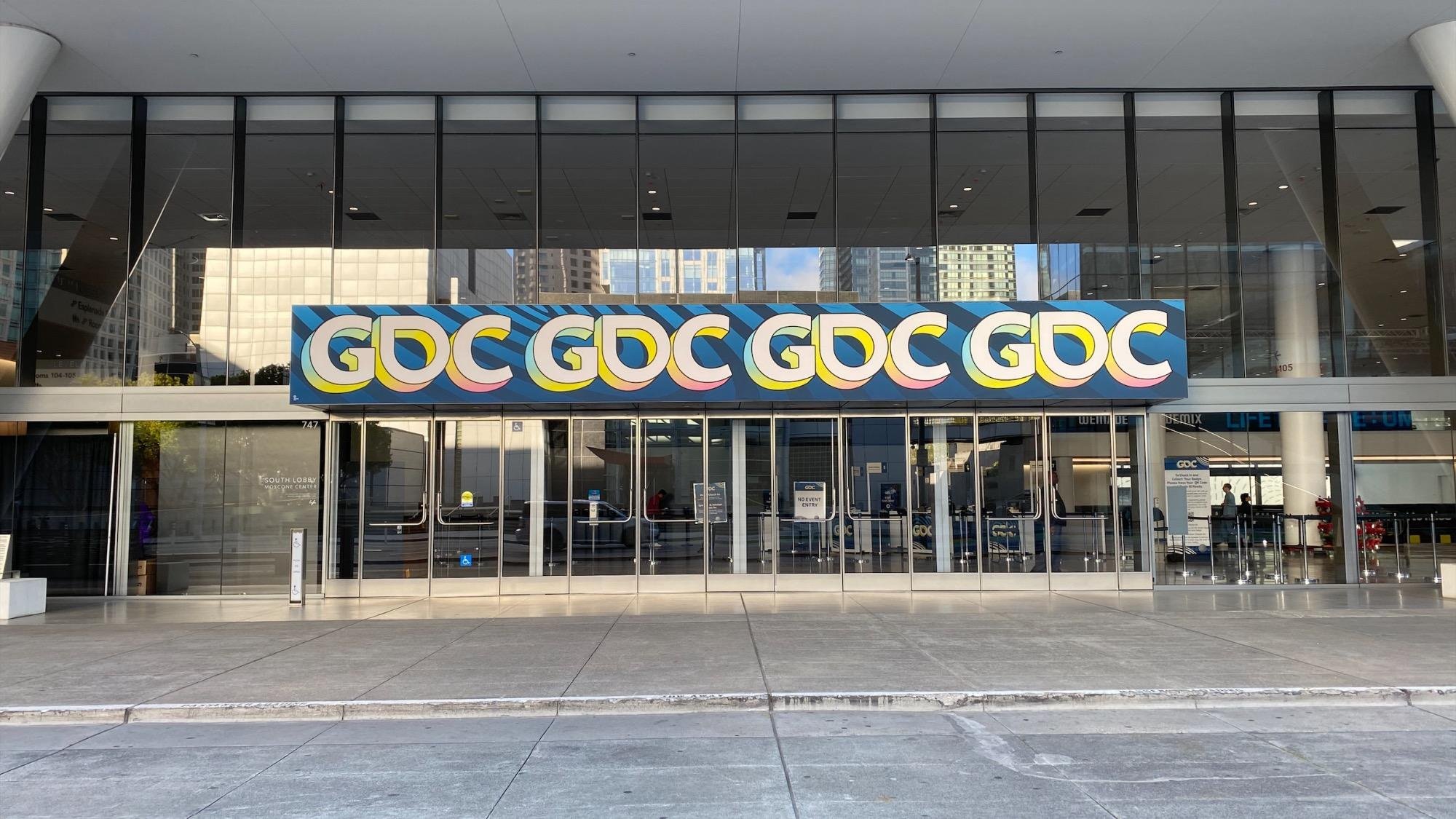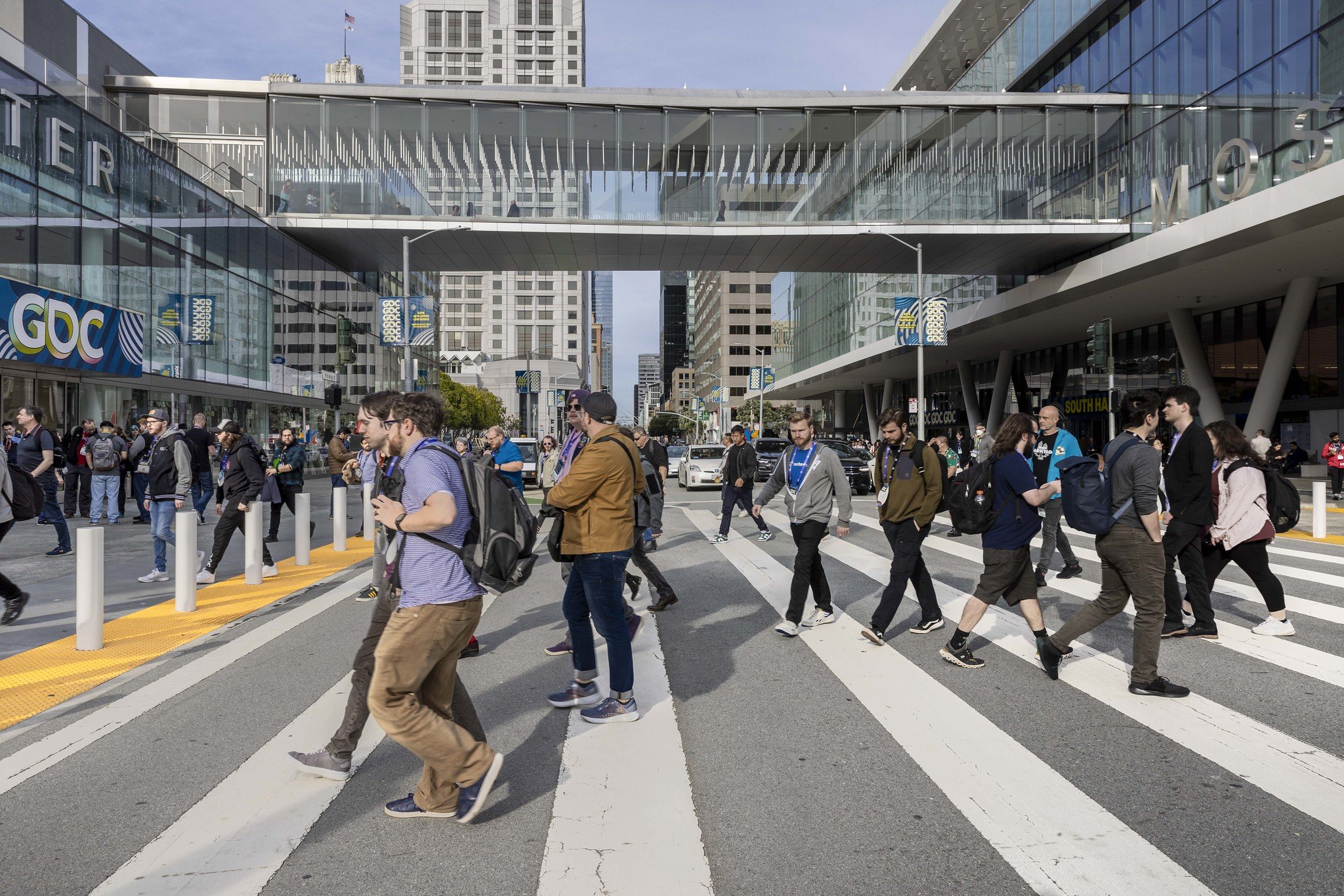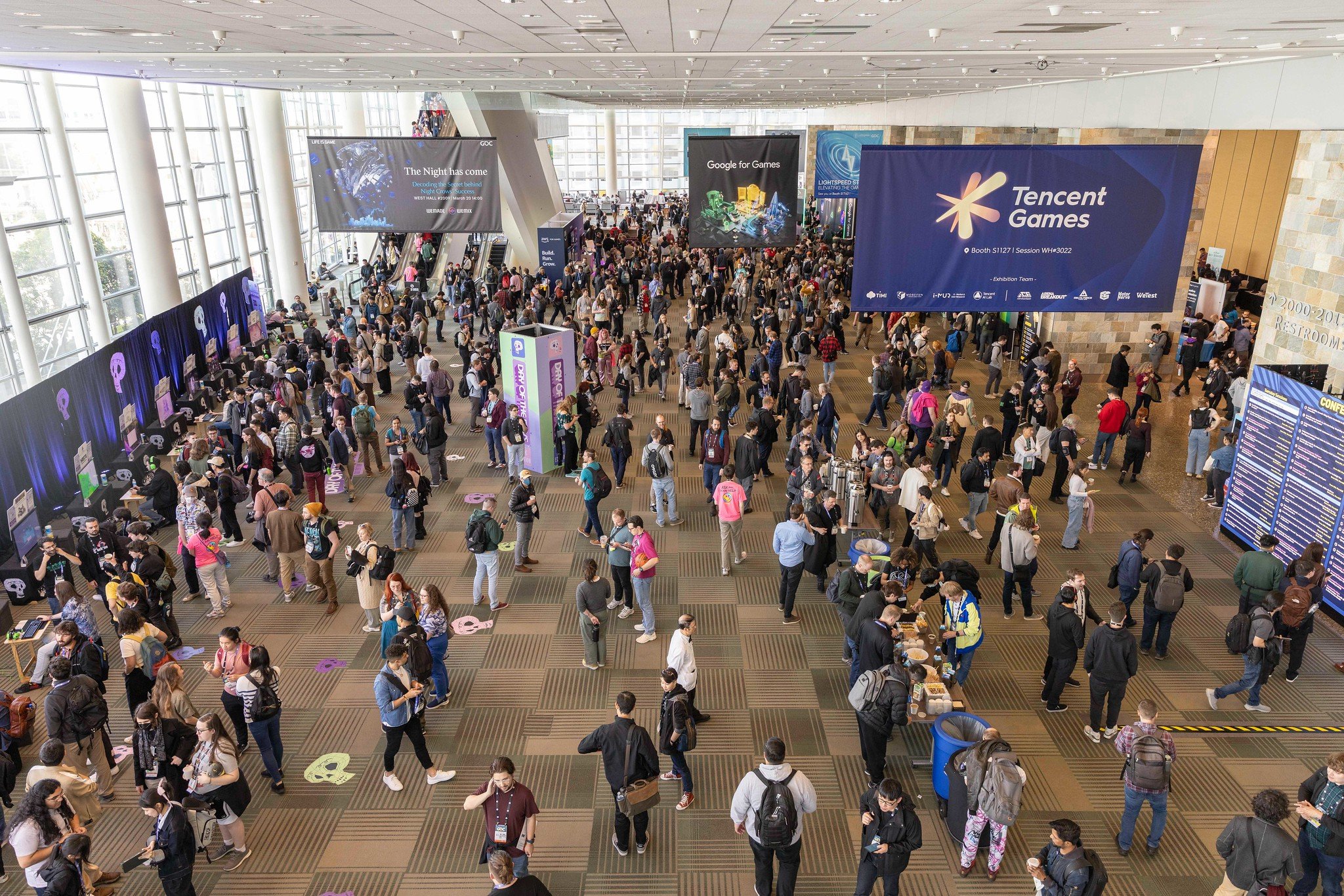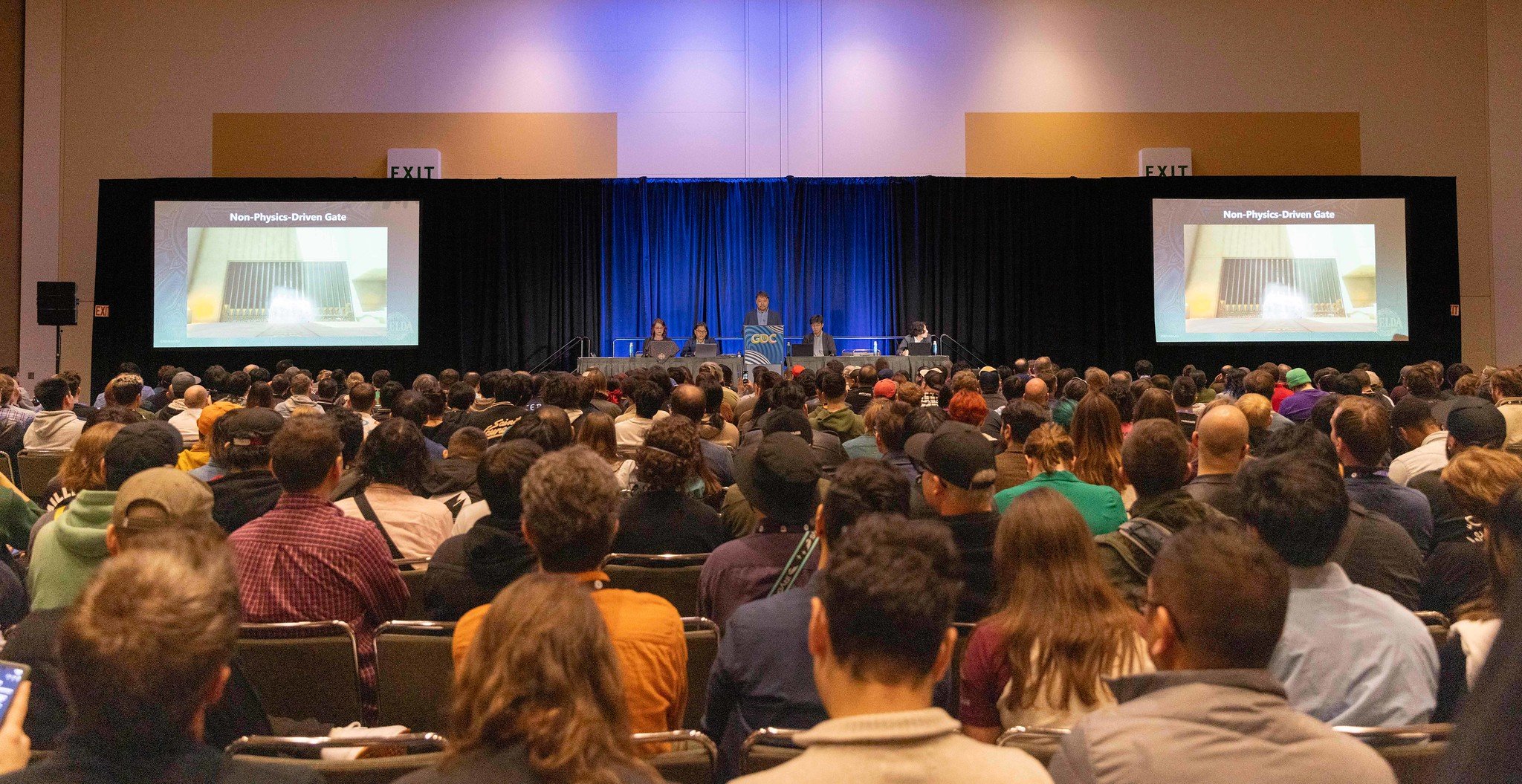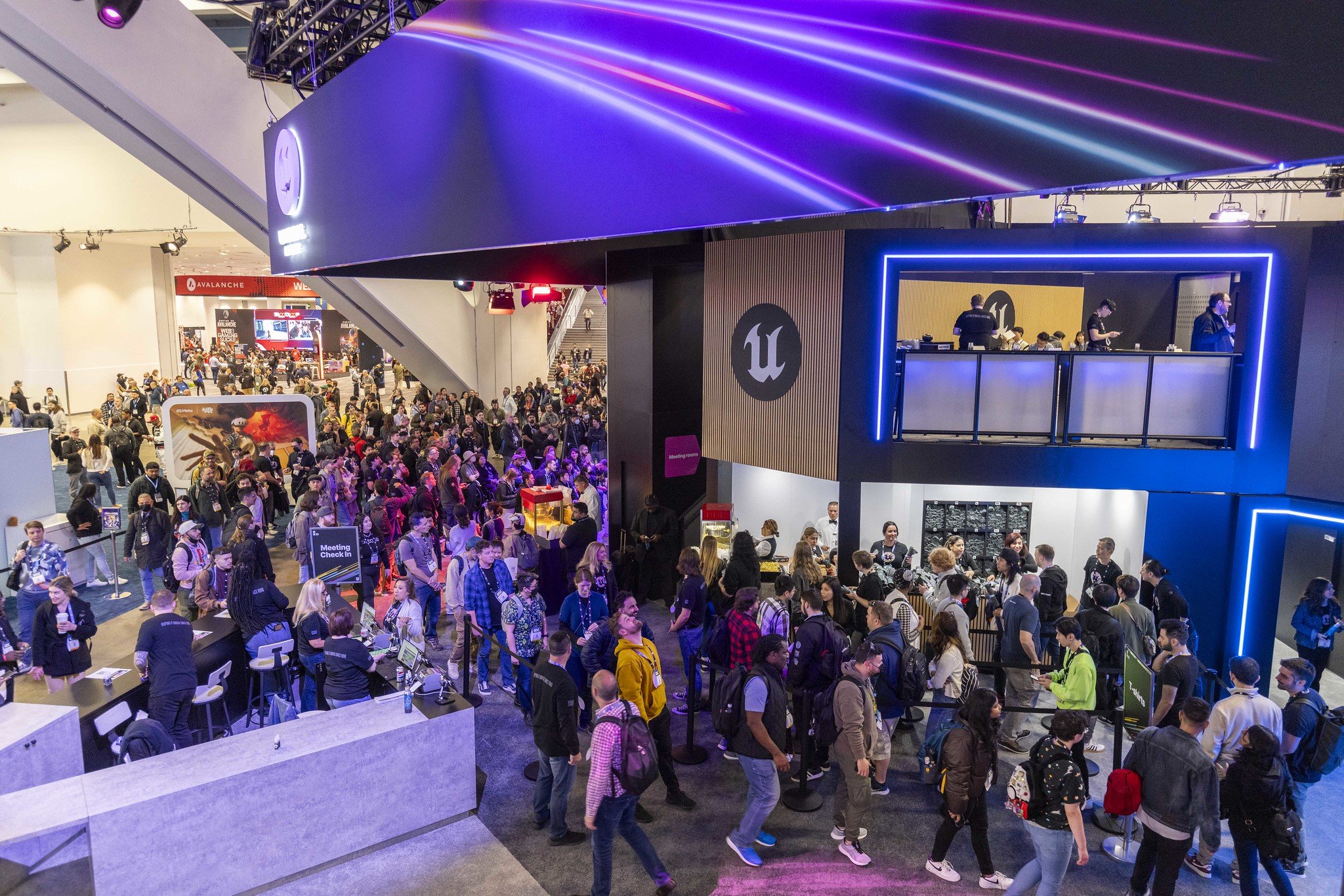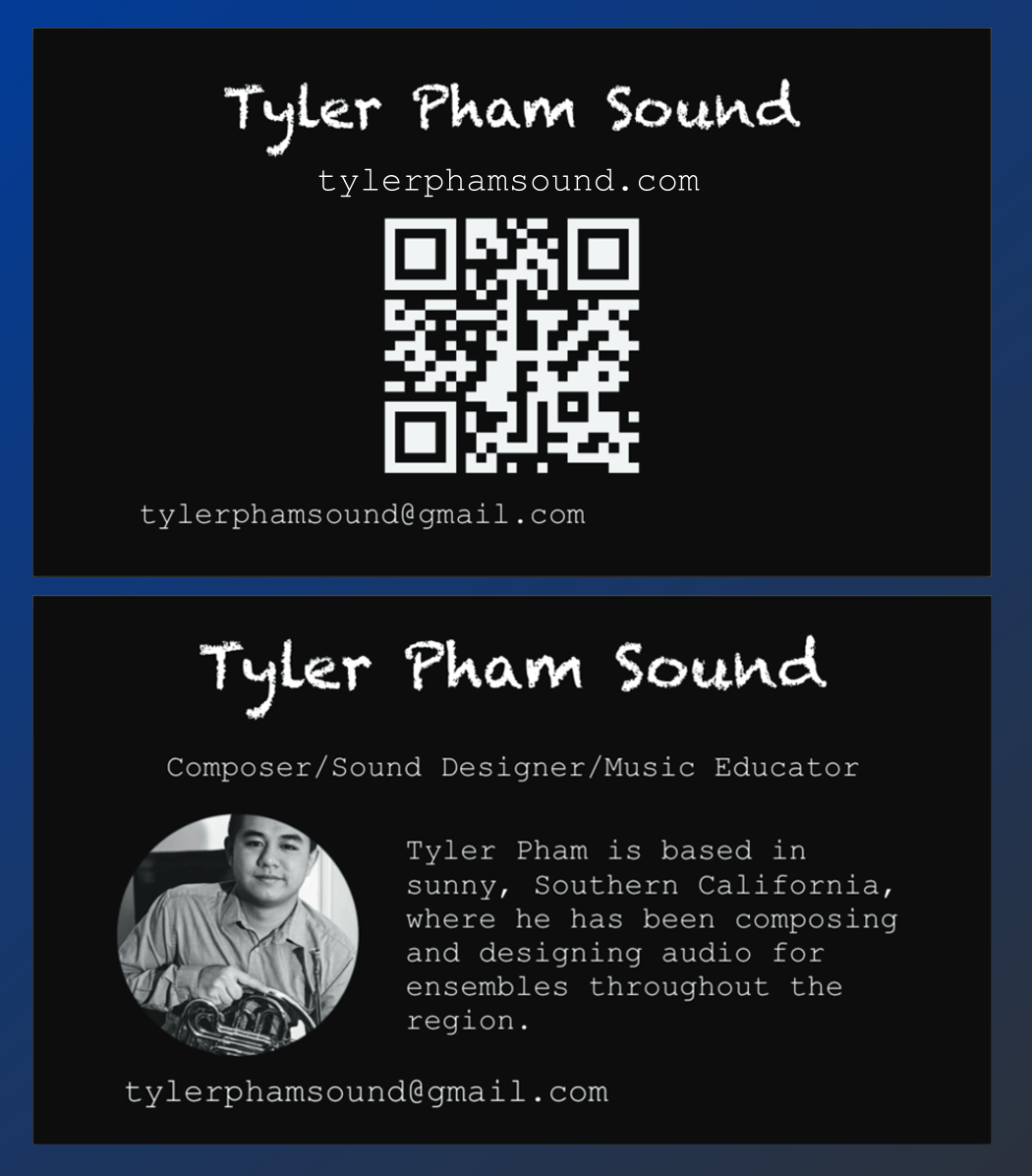Preface
Hello! This is my second ever blog post. This composition was originally composed for the Game Audio Network Guild’s “Music Demo Derby” which was a session at the Game Developer’s Conference this year where a panel of industry professionals review submissions by attendees of GDC in front of a live audience. My most nerve racking experience at GDC, but also totally worth it.
The panelists included:
Angela Little
Mason Lieberman
Jason Hayes
moderated by Emmanuel Lagumbay
I had a little over 6 hours to create this piece of music from start to finish, mainly because I wasn’t aware of the due date until a few days before the submissions needed to be turned in. That was on me, so my first piece of advice is to mark the due date on your calendar as soon as the info is available. But this blog serves as an excellent example of how I create an original composition from start to finish quickly and efficiently.
Below is the piece I submitted as is:
Theme
Inspiration
There are a handful of external influences that helped me create the aesthetic of the piece. The first one was from Koji Kondo and Mahito Yokota’s score for Super Mario Galaxy, specifically the music for the Gusty Garden Galaxy. You can listen to it below:
Another major piece of inspiration came from the Riot Music Team’s “Space Groove” which was released for the 2021 Space Groove skin line. You can listen to it here:
The Space Groove music theme was actually one of the pieces featured in the GDC talk “The Art of the Theme” (Brendon Williams, Jason Walsh) which just received a GANG Award this year for Best Game Audio Presentation, congrats! Jason and Brendon’s talk was actually the first Game Audio session I attended at GDC, safe to say they set the bar very high.
Intro
Rhythm Based Composition
The scariest part of composing is getting started, so I always try to start with a few simple compositional strategies to get the ball rolling, then build upon that. I already had the theme and vibe of the piece decided before starting to write any actual music, so I wasn’t overwhelmed by having “too many choices” since the instrumentation and timbre of the piece was decided beforehand. With that stuff out of the way, I could put a lot of focus on the basics: rhythm and melody. I decided to let a rhythm motif guide the process of creating a melody this time around. Drawing from my experience with writing for marching percussion, I knew that I wanted a strong rhythmic motif that would be able to hold the interest of the listener even if repeated, and I tend to do that by making sure my rhythmic phrases:
Are not all the same rhythm
Contain some sort of syncopation
Includes a tuplet(s) or interesting subdivision
With that in mind, here is the rhythmic motif for the intro of Whirlwind Adventure:
The above rhythmic motif's most notable characteristic is the quarter note triplet which helps prevent the phrase from becoming too monotonous. The quarter note rest at the beginning provides a sort of 'macro syncopation’ that aims to draw the listener in. Overall, the phrase appears to tick the boxes of not being boring. With the rhythm developed, it was time to apply a melody to it.
The intro needed a strong “Call to Action” feeling, so the beginning of the piece starts with a flourish of strings, harp, and percussion, followed immediately by the French Horns introducing the rhythmic motif. French Horn is often used for a many cinematic orchestral cues, and historically, carried the responsibility of representing heroism and excitement, as the french horn is a descendant of the horns used for hunting calls. Here’s what the end result sounds like:
The rest of the intro section is the same motif played by the different brass sections of the orchestra, giving the motif a very bombastic timbre. Here’s what that looks and sounds like:
Pitches are in Concert Key to improve readability.
Melodic Development
With the intro setting the stage bombastically I followed the same formula as Gusty Gardens by shifting to what would be considered the “main” melody of the piece. This is where the violins take over as the main voice as well, which provides a lot of contrast between the intro section and the next section. The violins come in with a pickup that bridges the gap between the brass intro and the main melody.
Instead of developing the melody through rhythm like I did for the intro, I decided to use a different compositional technique for the main melody. When you don’t have a tune or melody in your head that you can transcribe into you music, there are a myriad of methods that you can use to “generate” a melody of sorts. Something that is taught in music composition classes is to make a musical cryptogram by taking the letters from something like your name and transcribing those letters into your music. For example, I can use my name, Tyler Pham, and see what notes can be spelled out of the letters of my name. The most obvious note letters that would be used are the E in my first name (tylEr) and the A from my last name (phAm). If you have a longer name that uses more letters you’d be able to develop more notes into a melody, such as if you had the name Clayton Gregory: you’d be able to pull out ClAyton GrEgory, CAGE, which also happens to spell the word cage, neat! The most famous example of this is known as the BACH motif, where the melody is a musical cryptogram of Johann Sebastian Bach’s family name.
But the melody of Whirlwind Adventure isn’t a musical cryptogram of my name. Since I was composing for a session at the Game Developer’s Conference (GDC) I decided to use GDC instead! So the first three notes of the main melody are the notes letters G, D, and C. It’d be neat if the next Game Developer’s Conference would sneak this motif into their promotional materials.
This three note motif serves as the skeleton of the song’s melodic content for the rest of the piece. I created 4 “riffs” or “musical phrases” in total that act as a “call and response” to each other. This “call and response” vibe was emphasized by having different sections play each phrase one after the other (in order: Strings, Woodwinds, Solo Trumpet, Strings+Brass).
Transition to Disco Section
Midway through the piece we transition from a cinematic orchestral aesthetic abruptly into a high energy, dare I say cheesy, disco aesthetic. From the outset, I wanted my piece to maintain a fun and lighthearted tone, and throwing in some disco as a curve ball for the listener felt like a silly surprise that would make for a memorable experience. While at face value the transition seems like a simple crossfade between the orchestra and electronic instruments, I had to do quite a bit of experimenting in order to make the moment feel right to me.
The first consideration was whether the crossfade would be there in the first place. One of the initial ideas was for there to be a hard cut from the orchestra to the disco section, and while it definitely sent a clear signal to the listener that something had changed, it felt too abrupt. Once I decided on a crossfade as opposed to a hard cut, the second consideration was about timing, what count should the crossfade start and end? How many beats or measures should it take to finish the transition? This was really a matter of experimentation, where I listened to the transition over multiple passes, tweaking the timing of everything, until I felt satisfied with the end result. The third consideration was on a more technical level, which stems from the software workflow I used to create this piece as fast as possible.
The Software Workflow



My software workflow for this project consisted of three programs:
Musescore 4
FL Studio
Reaper
Both FL Studio and Reaper are pretty popular DAWs (Digital Audio Workstations,) which are programs that help you produce, process, mix, and edit sounds digitally. Musescore 4 on the other hand is music notation software, which is primarily used for composing and engraving sheet music intended to be given to performing musicians. All of the orchestral instruments you hear in Whirlwind Adventure is output from Musescore 4, the electronic instruments were from a few synthesizers produced in FL Studio, and the music stems from both of those were brought into Reaper to handle last touch edits and mixing.
Why (I used these tools)
Depending on the composer, this probably looks like a very abnormal and roundabout way to compose music. Why two different DAWs? Why use notation software like Musescore if you’re not recording performing musicians? To be completely honest, this workflow emerged as a mix of practicality and curiosity, and it ended up being a great learning experience.
Practicality:
My very limited time and budget led me to sticking with tools I already own. Musescore 4 is free and open source, and the Muse Sound Libraries are also free to download. With only a few hours to create the sounds of a full orchestra, and zero budget to hire real musicians, I made the executive decision that the Orchestral Muse Sounds library was a “good enough” solution that also had the benefit of being a very plug-and-play solution (all of the audio examples in this blog post are pulled directly out Musescore 4!) Classical music composition is one of my strong suits, I personally can notate music on staves much faster than configure synths and build MIDI patterns. So being able to use the tools I’m fastest with also made the most sense.
FL Studio in my opinion, is one of the best DAWs out there (even as a Linux user that has to use Wine to achieve compatibility.) It has a bunch of excellent features, but my favorite feature is that it’s a one time purchase for a lifetime license, which includes ALL future updates and releases, which is an absolutely wild value. Aside from it’s excellent value, it’s also the DAW I am the most familiar with, and that should be one of the biggest if not the biggest consideration for when you’re trying to establish a workflow. If you’re an expert at Logic, Cubase, Garage Band, Pro Tools, etc. and you find that you are not being limited by your program of choice, USE IT. Otherwise, you might end up stuck trying to find a solution to a problem that you would already know the solution to in another program. While I consider myself more familiar with classical music notation, when I need to work with synthesizers and MIDI, I’m most familiar with FL Studio, hence why I used it.
Curiosity:
While this demo is mostly considered a “professional” endeavor (not in the sense that it was paid work, but rather in the sense that it was work that is intended to contribute to developing my career path,) I still wanted to make sure that this was also a learning experience where I could demonstrate that my skill set is constantly growing.
Reaper is a very powerful DAW that is widely used throughout the games industry. It also is a great value, but people mainly use it because of it’s extend-ability through various scripts and addons that the community contributes towards it. While I was certainly more familiar with FL Studio at the time, I did want to take the time to get to grips with the basics of Reaper in case I would ever need to use it in future projects. It also conveniently complements FL Studio for my use case.
While FL Studio has one of the most powerful MIDI editing toolkits, it (at least to me) seems less geared towards editing recorded audio (or in this case, the .wav files coming out of Musescore 4.) Reaper, and most other traditional DAWs, tend to cater towards the opposite, handling and editing .wav files and recording audio with ease while having the MIDI editing tools be more of an afterthought.
This actually made Reaper the perfect place for me to combine both of the outputs of Musescore and FL Studio. I also limited myself to using Reaper for simple edits and mixing, which avoids the problems of using unfamiliar products in your workflow. In the end, I actually had a great time learning how to use Reaper effectively, and it has since been a useful tool to have on hand for other projects (editing podcasts in Reaper is a joy since there are tons of add-ons and scripts that speeds up the process immensely.)
Reception and Feedback
I won’t be writing too much about the feedback in this blog post for a few reasons:
Due to aforementioned budget constraints, I currently don’t have the budget to access the GDC Vault where I’d be able to directly reference the recording of the session.
I think the concept of how to receive and respond to feedback deserves an entire blog post on its own.
This post is months overdue and long enough as it is.
In summary, the reception of the demo was very positive by both the panel and the audience! I was super nervous to share my work in this setting since I’ve never done it before, but I’m very glad to have done it. Some feedback that I can recall off of memory is that:
Jason Hayes thought the background brass instruments during the disco section was too legato (long and smooth) when it could be more punchy and articulate in order to match the energy of the rest of the instruments (he actually referred to it as the string section by mistake, but I think that really highlights how much more refinement the brass sounds could have used in order to make their sound more transparent and in-character. I’ll also cut him some slack since he had to construct this feedback after just one listen to the piece.)
While Angela Little thought the Super Mario Galaxy-esque section was decent, she really enjoyed the how much of my personality came through during the disco section and she encouraged that I pursue more of that.
Mason Lieberman commended the Super Mario Galaxy-esque section, saying something along the lines of, “It’s a really tough and brave choice to try and fill in the shoes of Koji Kondo, and you did it with flying colors.” The main point of improvement he wanted to see out of the piece is to add more depth to the disco section via the use of more effects and processing. One specific example is that he would’ve really wanted to hear side-chain compression in order to enhance the dance/electronica aesthetic of the disco section.
Even though Emmanuel Lagumbay was a moderator on this panel, he’s a great colleague and after the session, made the recommendation of enhancing the orchestral instrumentation with the inclusion of mallet instruments, such as a marimba.
Next Steps
This blog post, like most things I make, ballooned into something much bigger and more in-depth that originally planned. What was supposed to be a weekly blog post turned into a multi-month project that required a massive amount of effort. Originally my idea behind “Next Steps” was to list the specific changes that I would be able to implement and feature a “Whirlwind Adventure v2,” utilizing all of the feedback that I received. I do eventually want to get to that, but have since have started working on other music projects!
For now Whirlwind Adventure v2 will be on the back burner until I find the time for it, as I am talking and working with a few teams now and want to deliver them the best work I can offer. I also want to speed up the cadence of the blog posts back to what it was originally intended to be, weekly, short and sweet updates about my journey as a composer, sound designer, and video game professional. I’d also like to blog about video games in general if it seems appropriate.
Until then, have a great day!






